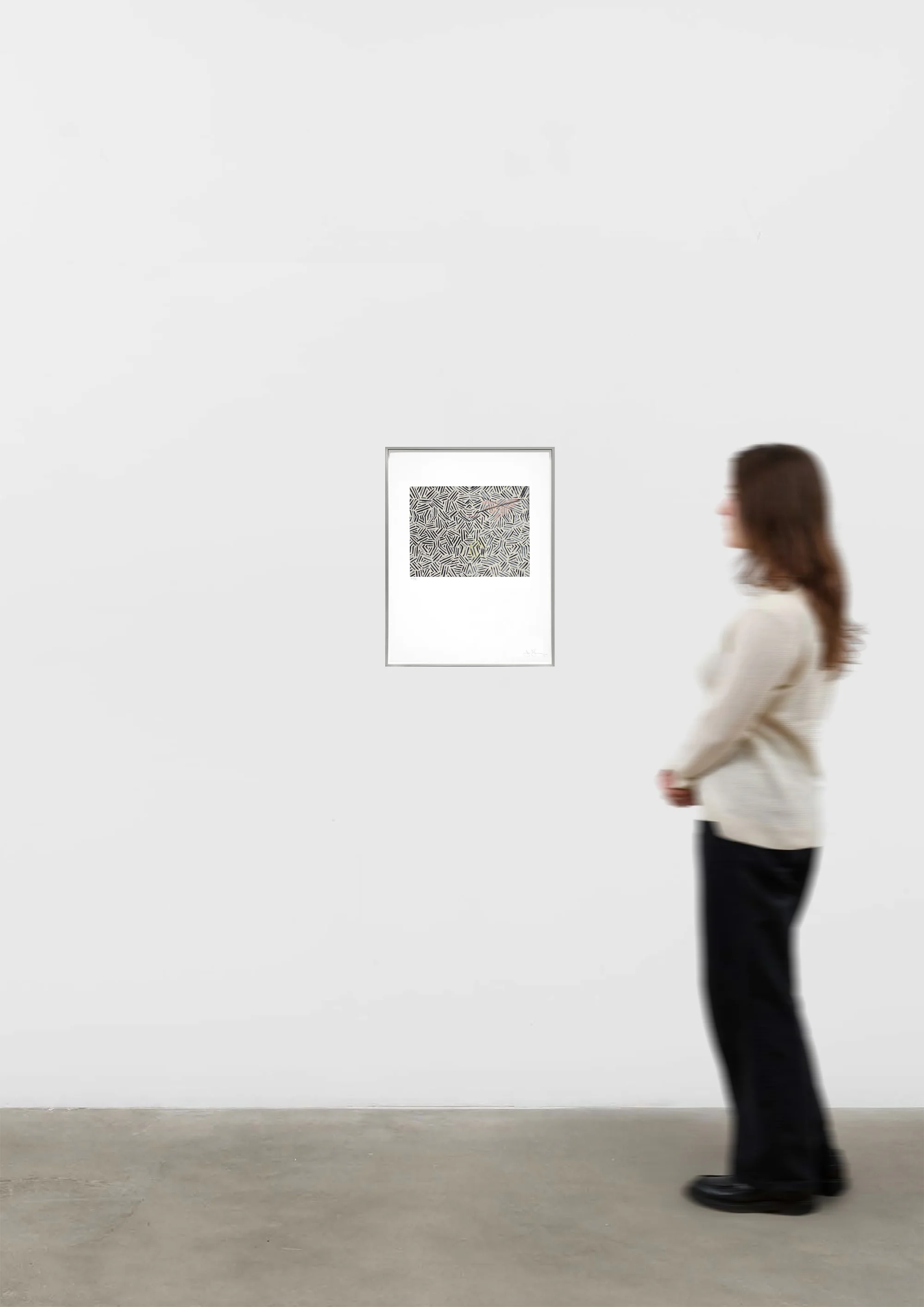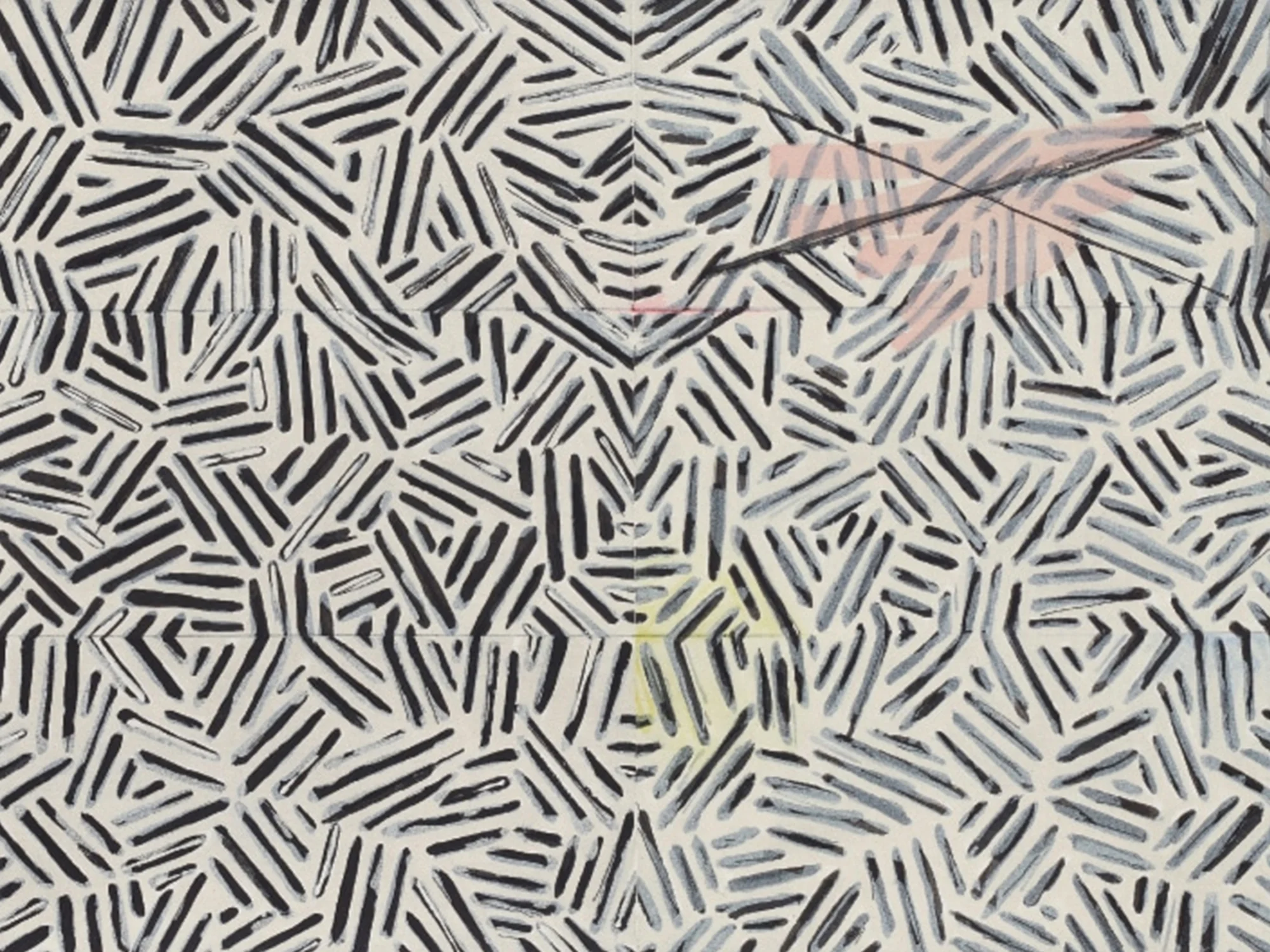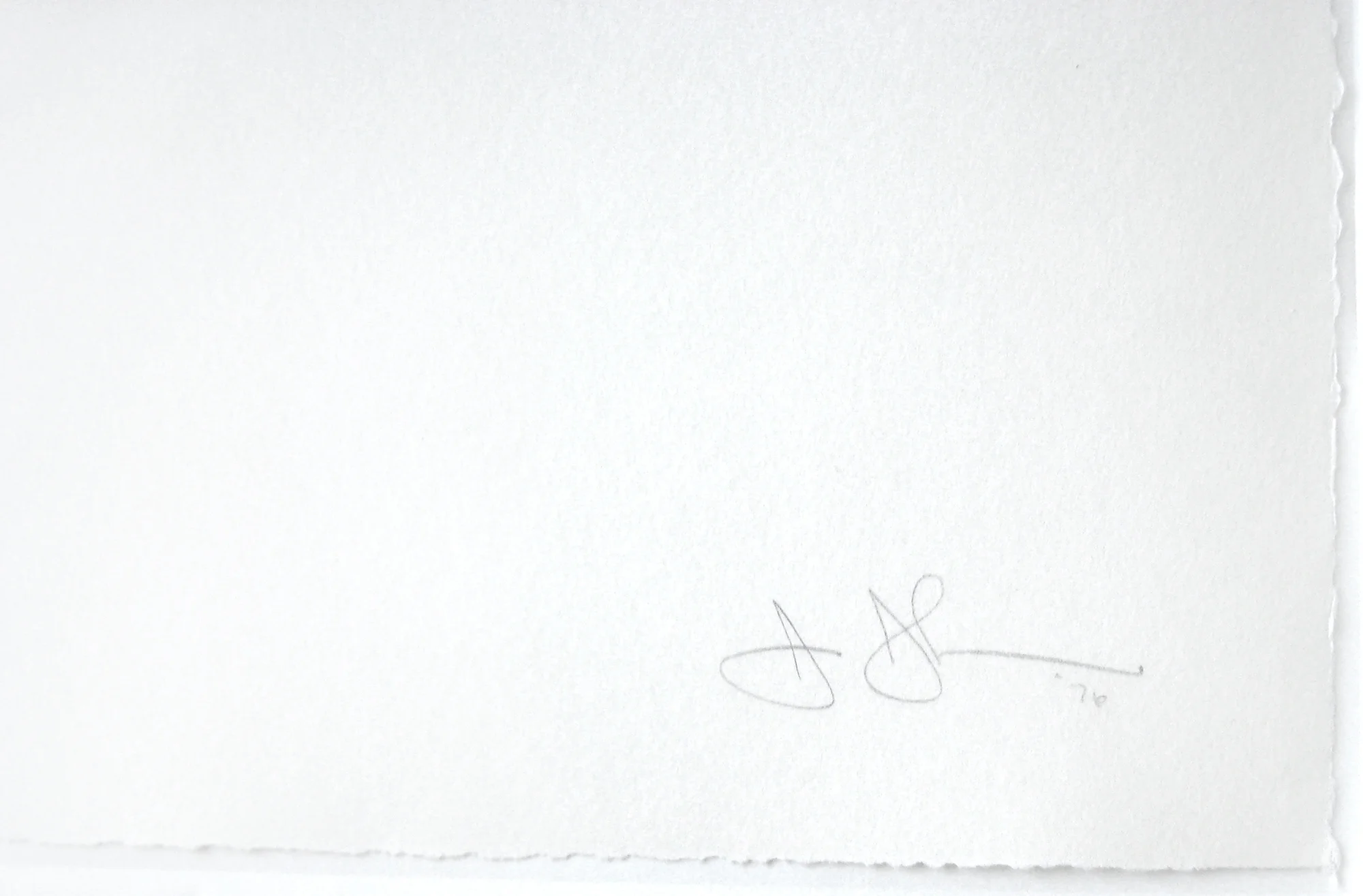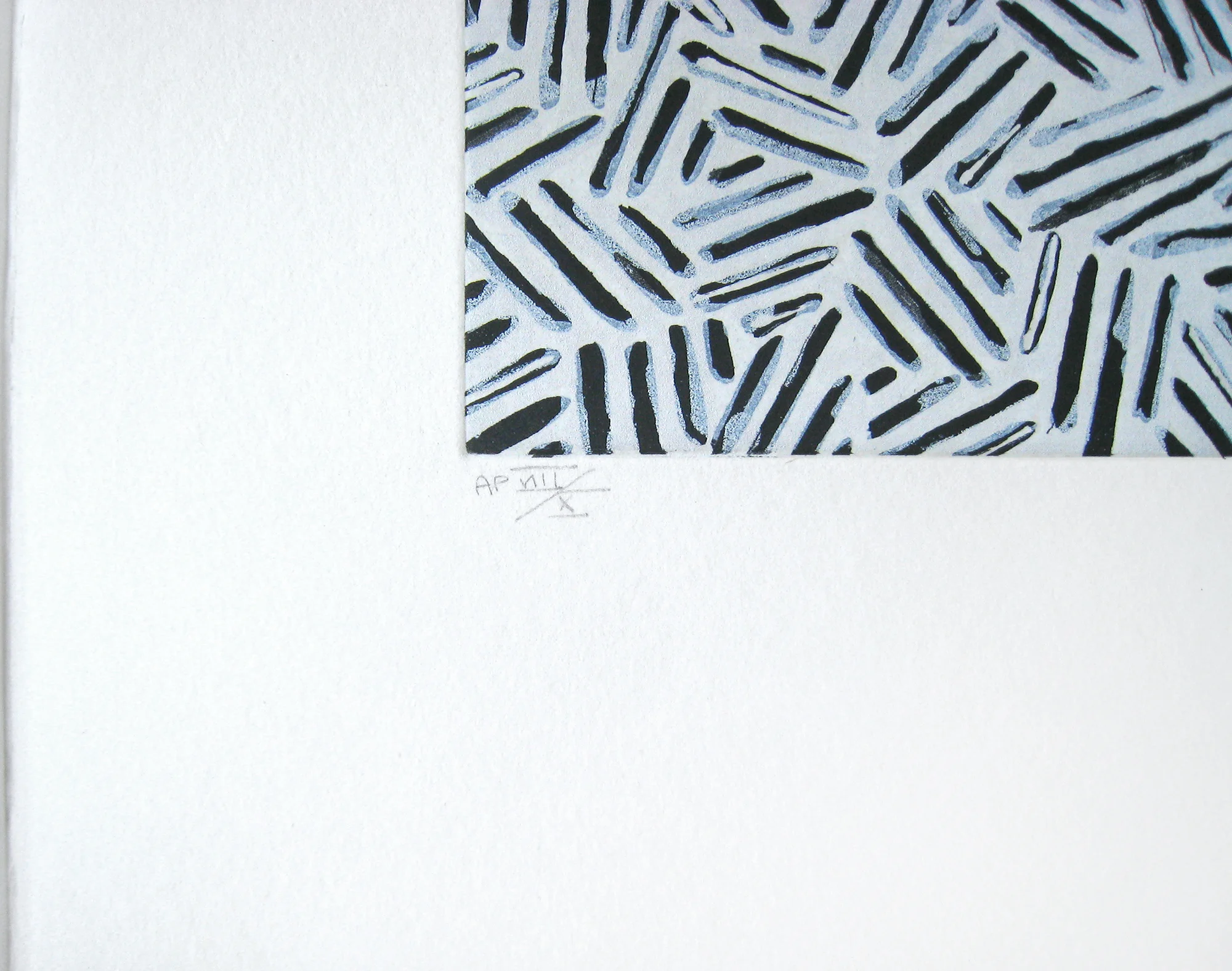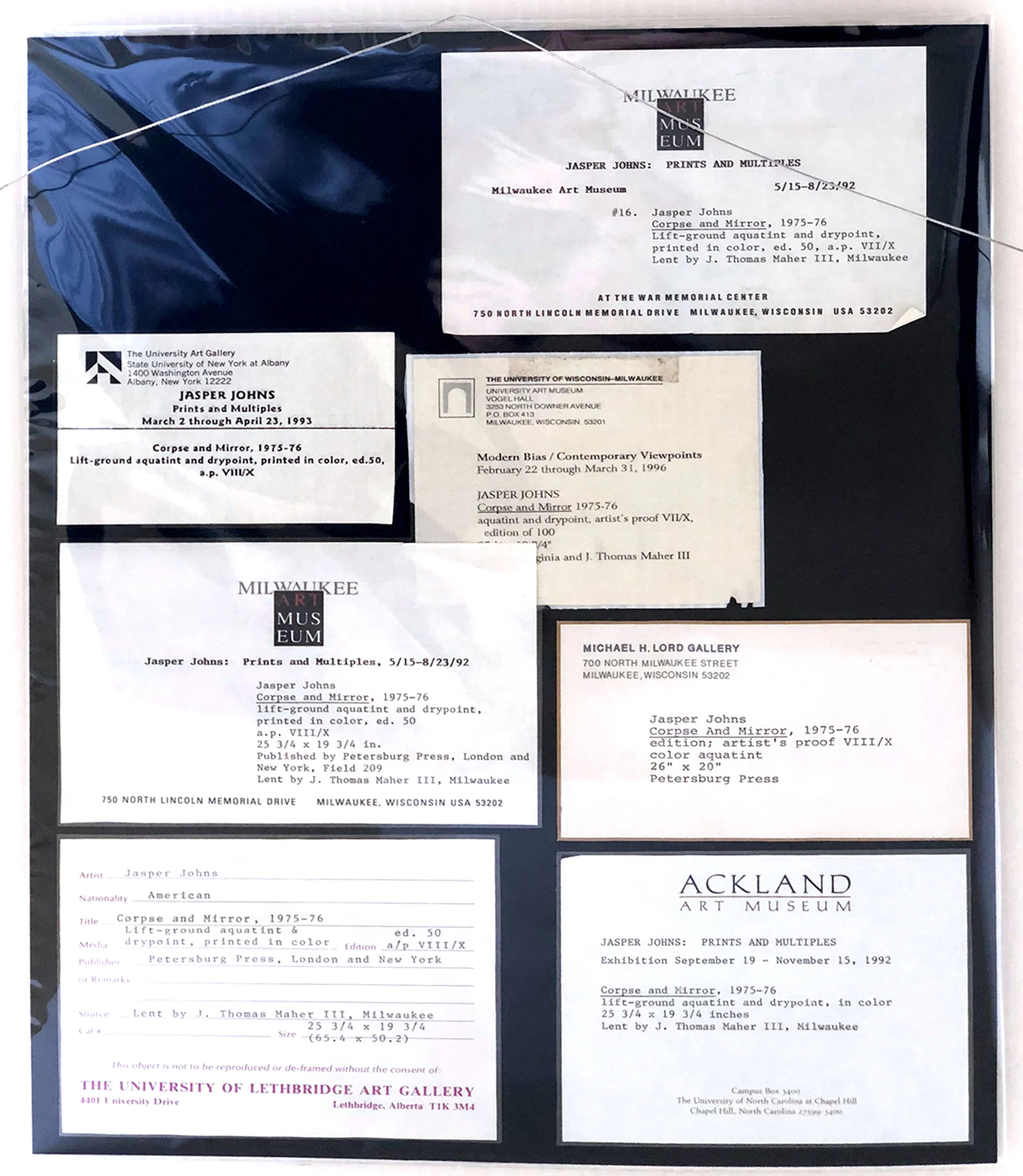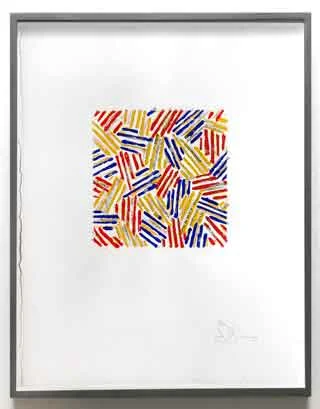Corpse and Mirror
(ULAE 167), 1976
paper: 25 3/4 by 19 3/4 inches
image: 10 1/2 x 14 inches
frame: 26 1/2 x 20 6/8 inches
edition: 50 with 10 AP's & 2 PP's
signed & dated in pencil "J Johns '76" lower right
numbered in pencil lower left
printed by Atelier Crommelynck
published by Petersburg Press, 1976
© 2024 Jasper Johns / Licensed by VAGA at Artists Rights Society (ARS), NY
Literature
Richard Field, Jasper Johns Prints 1970-1977, Wesleyan University, Middletown, 1978, Catalogue Reference 209, p. 105, another impression reproduced in black and white.
Michel Butor, Kathleen Slavin, Jasper Johns Gravures Dessins 1960-1991, Foundation Vincent Van Gogh, 1992, no. 58, pg. 106, another impression reproduced in full-page color.
Richard Field, The Prints of Jasper Johns 1960-1993: A Catalogue Raisonne, ULAE, New York, 1994, Catalogue Reference ULAE 167, n.p., another impression reproduced in full-page black and white.
Exhibited
The Museum of Modern Art, New York, Recent Acquisitions: American Prints, November 16,1978–February 20, 1979, another impression exhibited.
The Museum of Modern Art, New York, Jasper Johns: A Print Retrospective, May 19, 1986–August 19, 1986, another impression exhibited.
Milwaukee Art Museum, Milwaukee, Jasper Johns, Prints and Multiples, May 15, 1992-August 23, 1992, this impression exhibited.
Ackland Art Museum, University of North Carolina at Chapel Hill, Jasper Johns, Prints and Multiples, September 19, 1992-November 15, 1992, this impression exhibited.
University Art Gallery, State University of New York at Albany, Jasper Johns, Prints and Multiples, March 2, 1993-April, 23 1993, this impression exhibited,
The University of Lethbridge Art Gallery, Lethbridge, Alberta, December 13, 1992-January 31, 1993, this impression exhibited.
The University of Wisconsin, Milwaukee, Modern Bias / Contemporary Viewpoints, February 22-February 22, 1996-March, 31, 1996, this impression exhibited.
Selected Museum Collections
Walker Art Center, Minneapolis
National Gallery of Art, Australia
National Gallery of Art, Washington D.C.

